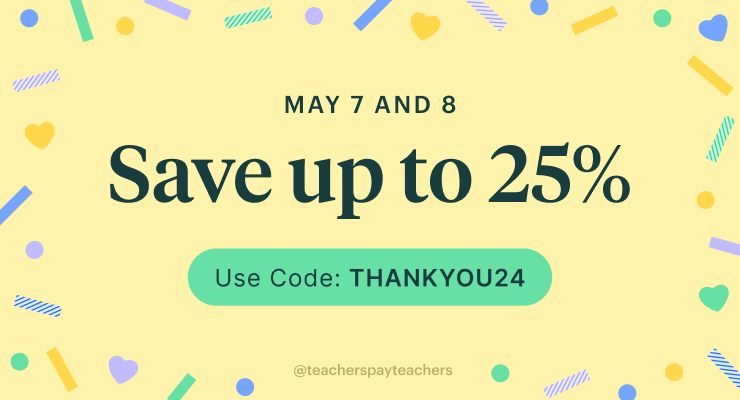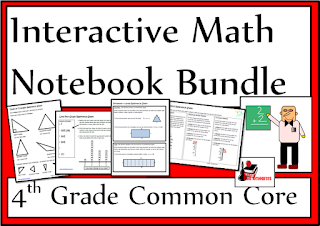It’s show and tell time! Stephanie at Forever in 5th Grade is hosting a monthly show and tell link up where lots of bloggers get together to show you what’s going on in their life or their classroom. Since I lhave left the classroom to homeschool my children while we travel in my RV, I thought that this month I would start by showing your what a school day looks like for me right now. For more about the RV journey, feel free to visit my other blog – RVing with the Rakis.
Each day we work in English, French and Arabic. The French and Arabic we do mainly follows the curriculum from Morocco, but in English we have the luxury to follow our own interests. Here’s what each of my kiddos is up to right now:
My youngest son is 4 years old. He is the youngest of 3 boys and he really, really wants to read. He knows all of his letter sounds, but is struggling with blending sounds. So I put together my AT family self correcting puzzle for him. While he’s not really reading, this puzzle makes him feel like he is! It’s a great confidence builder and it’s also familiarizing him with the concept of word families. We’re going to add a new puzzle each week this school year. You can download these puzzles from my Teachers Pay Teachers store if you’d like to use them with your kiddos.
My middle son is 8 years old. One of his biggest Christmas presents this year was a collection of Roald Dahl books. He has always been a reluctant reader. For a long time the only thing I could get him to read was Captain Underpants. Then this year I introduced him to Roald Dahl using Charlie and the Chocolate Factory. He fell in love the Roald Dahl’s quicky sense of humor and now he is reading on his own without being asked! The other day he read for over an hour on his own. We missed a bunch of “book work” but I didn’t care. Seeing him enjoy reading was worth letting other work slip.

My oldest son is 11 years old. His current favorite thing is to watch educational YouTube videos like TEDed and Crash Course. He has watched so many of them that he is starting to run out of videos that he hasn’t seen. With these videos he has taught himself about world history, the science of different diseases, psychology basics and all kinds of random trivia. I love that he’s interested in learning and he loves that I’m letting him have a lot of screen time. Of course he also loves watching them while laying in bed - the best place to learn! It’s a win, win!
Don’t forget to stop by the Show and Tell Linky to explore more show and tells from other bloggers. Also, don't forget to stop by my Teachers Pay Teachers store Jan 20 & Jan 21 of 2016 to save 20% on everything in my store during the Start Your Year Sale. Use the promo code START16 for an additional 10%.

Tests have become such a hot ticket topic in education. In previous blog posts like What’s Wrong with Standardized Testing and Why Projects are Better than Tests, I have discussed my feelings about standardized testing and testing in general. However, tests can serve a vital purpose in the learning process, especially if they aren’t entered into a grade book. Once we write a grade into our grade book, it means that the learning has stopped. However, we can take the results of tests and use them to drive our instruction and be sure that learning is complete. In order to do this properly, we ideally give our test a week or so before we wish to be “done” teaching a certain topic. Or we allot a portion of our instructional time to continue working on skills that have not yet been mastered. Then we take the test results and use them to drive our instruction. After the additional instruction time, another test can be given, or even better a project, if a grade is needed.

Here are five different strategies that you can take your test results and use them to drive your instruction:
1.) Conference with your students – Take time to sit down with each student to review their results. Talk about both strengths and weaknesses and set specific goals for the next step in their growth. We most commonly do this with reading and writing, but the same concept can be used for many subjects. For example, on a Social Studies test, you might discuss with students the topics that they struggled with on their assessment and suggest (or assign) further research into that topic. In Math, you might suggest a problem solving strategy that would better suit them or point out a simple misconception that they have and suggest ways to correct it.
2.) Create small groups – Take your assessment and create a list of skills or topics that were assessed. Then, review your assessments to see which students are still struggling with which skills or topics. Using this information, create temporary small groups based on the needs of individual students. Use these groups to work on that specific need. These groups might each meet with you or they might be given targeted assignments to help guide them through conquering those missing skills.
3.) Allow students to correct their own mistakes – Give students back their tests with the incorrect answers circled, but no clues given as to the correct answer. Ask students to correct each question, allowing them to use notes, books and additional research. Ask students to do their corrections in color or on an additional piece of paper to prevent a confusion of original answers and corrections. During the process, students will reflect on their own learning and recognize the gaps that they need to fill.
4.) Create need based activities or projects - If the majority of your students are lacking on a specific skill based on test results, create activities, lessons or projects that will help the students have additional time to work with the concept. For example, one year my students were struggling with long operations – addition, subtraction, multiplication and division. So I sat down and created a project to help them work on these skills in a real life setting. The resulting project was my balanced checkbook project. This project forced them to use the operations in different ways, but they were so excited to figure out their weekly salary and get spending that there were no qualms and they had a much better understanding by the end of the project.
5.) Provide tiered assignments – For single skill assessments, tiered assignments can come in handy. Students all continue to work on that skill after the test, but they work at a different level depending on their test score. If they have mastered the skill, they are given extension activities to push them into higher level thinking skills. If they have not mastered the skill, they are given time to review. If they have grasped the skill, but not mastered it, they are given time to practice.

One way I used to do this was with the prove it, solve it, fix it approach. In this strategy, all of the students are given a paper with a set of problems. ( I usually used this in math, but it could be done in other subjects as well.) The lowest level students are given the set of problems with the answers provided. They are asked to prove that those answers are correct. By having the correct answer already, the pressure to get the right answer is off and the students have a chance to focus on the process, which is more important anyways.
Mid level students are given the same problem set and asked to solve each problem. This gives them a chance to continue practicing the skill. Higher level students or students who seem to have mastered the skill work on the fix it level. They are given the same problem set, but with incorrect answers. The answers preferably have common mistakes that teachers see regularly with that skill. The students at this level then try to figure out how the students got the incorrect answer and then fix it. Students at this level build higher level thinking and continue working on the skill at another level. You can download a subtraction with regrouping prove it, try it, fix it sheet for free from my Teachers Pay Teachers store to check out this strategy further.
How do you use test scores to drive instruction in your classroom?
Happy New Year! I hope that you all had a lovely 2015 and are gearing up for a fabulous 2016. Finishing 2015 for me meant that I completed my first calendar year of not teaching in the classroom. I decided to take this leap for two reasons.
Reason number one was so I could homeschool my children and travel around the US in our RV, which was a ravishing success. You can read more about our year at RVing with the Rakis.
Reason number two was so that I could focus more on bringing quality resources to you through my Teachers Pay Teachers store. This was also a ravishing success. As I added 3 new interactive math notebook lessons to my catalog yesterday to finish out my 5th Grade Common Core Bundle, I realized that this year I have added 85 new resources to my store. The majority of these resources were added to complete series and bundles that I started while I was teaching in the classroom. I always planned to complete these sets, I just never had the time. So this year I used all of my extra time to:
- complete my Year Long Spelling Packets
- add to my ESL Vocabulary Packets (this set will be completed to 100% in 2016)
- complete my Aesop's Fable Reading Response Packets
- complete interactive math notebook bundles for 2nd grade, 3rd grade, 4th grade and 5th grade
- complete my Primary Grades Word Wall Bundle
- complete my Primary Grades Writing Journals
- create a Non Fiction Book Study for Any Book companion to my Novel Study for Any Book
In order to celebrate the new year, I have put every resource created in 2015 on sale for the next 3 days. So stop by my Teachers Pay Teachers store and save on these new, quality resources.
In 2016, my plans include a full update on my Problem Solving Path sets, additional problem solving resources for primary students, completion of my ESL Vocabulary Packets, completion of my Greek and Latin Root Word Packets, and the release of my School on the Go Homeschool Curriculum.
What are your plans for 2016?

















